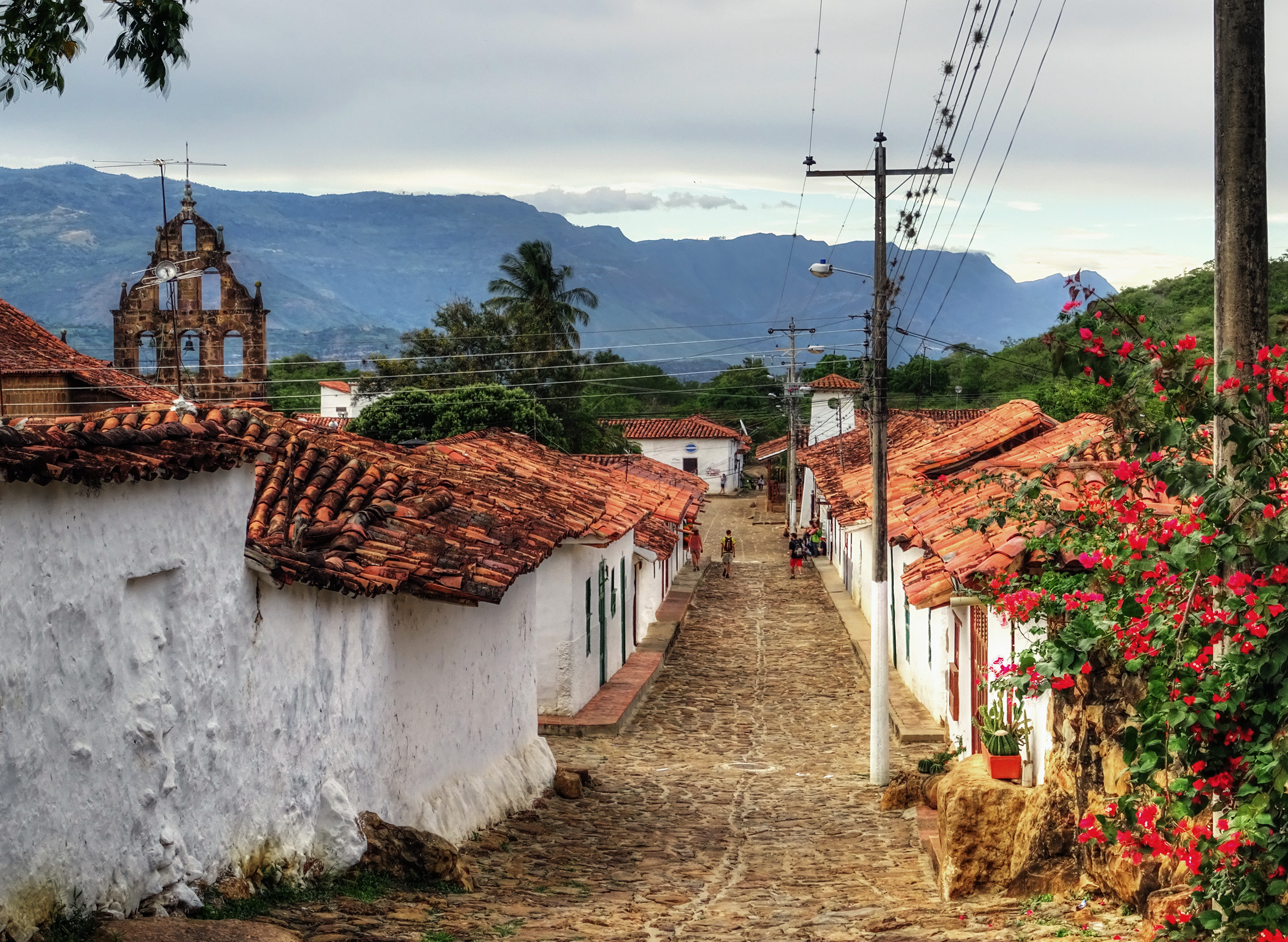Harvest: October–December
Elevation: 900–2,300 metres (3,000–7,500 feet) above sea level
Rainfall: 1,100–2,400 millimetres (43–94 inches)
Temperature: 17°C–25°C (63°F–77°F)
Santander, in Colombia’s northeast, was one of the nine ‘sovereign’ states of nineteenth-century Colombia. In 1910, new legislation divided Santander into two departments: Norte de Santander and modern-day Santander.
Although Norte de Santander produced Colombia’s first coffee exports, modern-day Santander may have been the site of the very first coffee plants grown in the country. Bernabé Ordóñez and Francisco Puyana planted the first coffee trees in Bucaramanga province in 1774 (Superintendency of Industry and Commerce 2014). They encouraged local farmers to follow their example, with little initial success: the total harvest in 1822 was less than a dozen bags (Garcia 1894).
 The Camino Real, a pre-colonial road in the heart of Santander
The Camino Real, a pre-colonial road in the heart of Santander
The region that would become Norte de Santander dominated coffee production in the nineteenth century, but after the departments were partitioned in the twentieth century, Santander’s production began to grow as smallholder farmers entered the industry (Palacios 2009). The generally poor quality of Santander’s coffee at the time, combined with the requirement that most exports had to pass through Venezuela, hampered commercialisation efforts, however (Bergquist 1978), and the Eje Cafetero to the southwest became the main centre of production.
Recent decades evidence a transformation in Santander’s production. The land area planted with coffee began to increase, from 41,000 hectares in 2007 to over 53,000 in 2021 (FNC 2022). The increase in production has been even more spectacular, doubling over the course of a decade to 810,000 bags per year in 2019 (FNC 2020).
Santander’s coffee industry had a further boost when it obtained a Denomination of Origin (DO) in 2014. The DO documentation highlights some of the challenges of growing coffee in the region.
